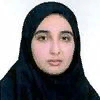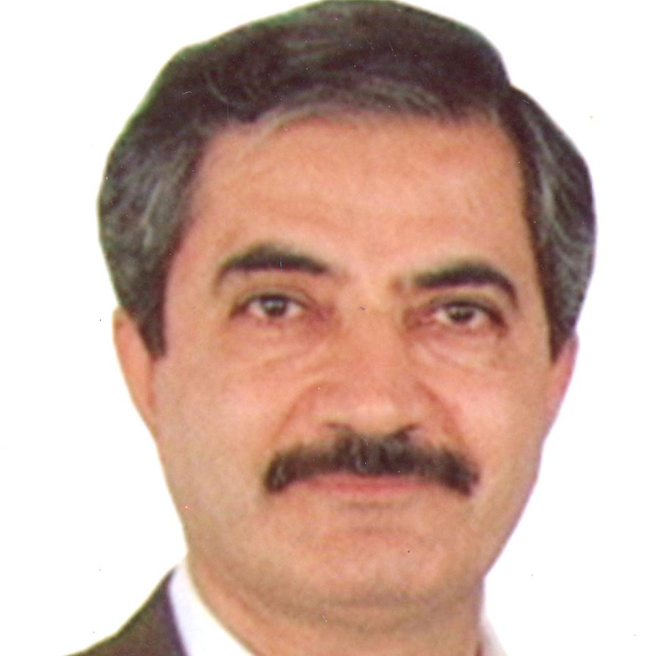International Journal of Image, Graphics and Signal Processing (IJIGSP)
IJIGSP Vol. 6, No. 1, 8 Nov. 2013
Cover page and Table of Contents: PDF (size: 729KB)
Mass Detection in Lung CT Images using Region Growing Segmentation and Decision Making based on Fuzzy Systems
Full Text (PDF, 729KB), PP.1-8
Views: 0 Downloads: 0
Author(s)
Index Terms
Segmentation, Fuzzy Systems, lung cancer, tumor markers
Abstract
Lung cancer is distinguished by presenting one of the highest incidences and one of the highest rates of mortality among all other types of cancers. Detecting and curing the disease in the early stages provides the patients with a high chance of survival. In order to help specialists in the search and recognition of the lung nodules in tomography images, a good number of research centers have been developed in computer-aided detection (CAD) systems for automating the procedures. This work aims at detecting lung nodules automatically through computerized tomography images. Accordingly, this article aim at presenting a method to improve the efficiency of the lung cancer diagnosis system, through proposing a region growing segmentation method to segment CT scan lung images and, then, cancer recognition by FIS (Fuzzy Inference System).
The proposed method consists of three steps. The first step was pre-processing for enhancing contrast, removing noise, and pictures less corrupted by Linear-Filtering. In second step, the region growing segmentation method was used to segment the CT images. In third step, we have developed an expert system for decision making which differentiates between normal, benign, malignant or advanced abnormality findings. The FIS can be of great help in diagnosing any abnormality in the medical images. This step was done by extracting the features such as area and color (gray values) and given to the FIS as input. This system utilizes fuzzy membership functions which can be stated in the form of if-then rules for finding the type of the abnormality. Finally, the analysis step will be discussed and the accuracy of the method will be determined. Our experiments show that the average sensitivity of the proposed method is more than 95%.
Cite This Paper
Hamid bagherieh, Atiyeh Hashemi, Abdol Hamid Pilevar ,"Mass Detection in Lung CT Images using Region Growing Segmentation and Decision Making based on Fuzzy Systems", IJIGSP, vol.6, no.1, pp.1-8, 2014. DOI: 10.5815/ijigsp.2014.01.01
Reference
[1]F. Taher, N. Werghi, H. Al-Ahmad, and R. Sammouda, "Lung Cancer Detection by Using Artificial Neural Network and Fuzzy Clustering Methods," American Journal of Biomedical Engineering, vol. 2, pp. 136-142, 2012.
[2]G. DeNunzio, A.Massafra, R.Cataldo, I.DeMitri, M.Peccarisi, M.E.Fantacci, G.Gargano, and L. e, "Approaches tojuxta-pleural nodule detection in CT images within the MAGIC-5 Collaboration," Nuclear Instruments and Methods in Physics Research, pp. 5103-5105, 2011.
[3]X.-Y. Wang and J. M. Garibaldi, "Simulated Annealing Fuzzy Clustering in Cancer Diagnosis," Department of Computer Science & Information Technology, vol. 29, pp. 61–70, 2005.
[4]M. F and F. CHG, "Molecular Biology of Cancer.Springer-Verlag New York, Incorporated," 1997.
[5]K. KW and V. B, "Genetic Basis of Human Cancer.McGraw-Hill," 2002.
[6]L. MS and S. GV, "Genetics of Cancer: Genes Associated With Cancer Invasion, Metastasis and Cell Proliferation. Academic Press , London.," 1997.
[7]K. R and T. M, "Molecular Biology in Cancer Medicine.Pearson education, Harlow," 1999.
[8]S. E. Mahmoudi, A. Akhondi-Asl, R. Rahmani, S. Faghih-Roohi, V. Taimouri, A. Sabouri, and H. Soltanian-Zadeh, "Web-based interactive 2D/3D medical image processing and visualization software," computer methods and programs in biomedicine, vol. 9 8, pp. 172–182, 2010.
[9]T. Manikandan and N. Bharathi, "Lung Cancer Diagnosis from CT Images Using Fuzzy Inference System," Communications in Computer and Information Science vol. 250, pp. 642-647, 2011.
[10]J. Quintanilla-Dominguez, B. Ojeda-Magaña, M. G. Cortina-Januchs, R. Ruelas, A. Vega-Corona, and D. Andina, "Image segmentation by fuzzy and possibilistic clustering algorithms for the identification of microcalcifications," Sharif University of Technology Scientia Iranica, vol. 18, pp. 580–589, Received 21 July 2010; revised 26 October 2010; accepted 8 February 2011 2011.
[11]A. Klein, W. K. Renema, L. J. Oostveen, L. J. S. Kool, and C. H. Slump, "A segmentation method for stentgrafts in the abdominal aorta from ECG-gated CTA data," Proceedings of SPIE, p. 69160R, 2008.
[12]J. N. Kaftan, H. Tek, T. Aach, J. P. W. Pluim, and B. M. Dawant, "A two-stage approach for fully automatic segmentation of venous vascular structures in liver CT images," Proceedings of SPIE, p. 725911, 2009.
[13]M. Freiman, L. Joskowicz, J. Sosna, M. I. Miga, and K. H. Wong, "A variational method for vessels segmentation: algorithm and application to liver vessels visualization," Proceedings of SPIE, p. 72610H, 2009.
[14]A. Manduca, J. G. Fletcher, R. J. Wentz, R. C. Shields, T. J. Vrtiska, H. Siddiki, T. H. Nielson, X.P., and A. V. Clough, "Reproducibility of aortic pulsatility measurements from ECG-gated abdominal CTA in patients with abdominal aortic aneurysms," Proceedings of SPIE, p. 72620L, 2009.
[15]S. Worz, W. J. Godinez, K. Rohr, J. P. W. Pluim, and B. M. Dawant, "Segmentation of 3D tubular structures based on 3D intensity models and particle filter tracking," Proceedings of SPIE, p. 72591P, 2009.
[16]A. F. Frangi, W. J. Niessen, K. L. Vincken, and M. A. Viergever, "Multiscale vessel enhancement filtering," Lect. Notes Comput. Sci, vol. 1496, pp. 130-137, 1998.
[17]C. Jacobs, C. I. Sánchez, S. C. Saur, T. Twellmann, P. A. de Jong, and B. van Ginneken, "Computer-aided detection of ground glass nodules in thoracic CT images using shape, intensity and context features.," Medical image computing and computer-assisted intervention: MICCAI ... International Conference on Medical Image Computing and Computer-Assisted Intervention, vol. 14, pp. 207-214, 2011.
[18]A. Retico, P. Delogu, M. E. Fantacci, I. Gori, and A. Preite Martinez, "Lung nodule detection in low-dose and thin-slice computed tomography," Computers in Biology and Medicine vol. 38, pp. 525-534, 2008.
[19]Aristofanes, c.silva, p. cezar, p.carvalho, and m. gattass, "Analysis of spatial variability using geostatistical functions for diagnosis of lung nodule in computerized tomography images," Springer-Verlag London Limited 2004-short paper, pp. 227-234, 2004.
[20]K. Kanazawa, Y. Kawata, H. S. N. Niki, H. Ohmatsu, R. Kakinuma, M. Kaneko, K. Eguchi, and N. Moriyama, "Computer-aided diagnostic system for pulmonary nodules using helical CT images," Medical Image Computing and Computer-Assisted Interventation — MICCAI’98, vol. 1496, pp. 449-456, 1998.
[21]S. A. Kumar, Dr.J.Ramesh, Dr.P.T.Vanathi, and Dr.K.Gunavathi, "ROBUST AND AUTOMATED LUNG NODULE DIAGNOSIS FROM CT IMAGES BASED ON FUZZY SYSTEMS," IEEE, pp. 1-6, 2011.
[22]J. SCHNEIDER, N. BITTERLICH, N. KOTSCHY-LANG, W. RAAB, and H.-J. WOITOWITZ, "A Fuzzy-classifier Using a Marker Panel for the Detection of Lung Cancers in Asbestosis Patients," ANTICANCER RESEARCH, vol. 27, pp. 1869-1878, 2007.
[23]J. G. Moreno-Torres, X. Llorà, D. E. Goldberg, and R. Bhargava, "Repairing fractures between data using genetic programming-based feature extraction: A case study in cancer diagnosis," Contents lists available at ScienceDirect Information Sciences, pp. 1-19, 2010.
[24]B. S. Morse, Lecture 18: Segmentation (Region Based), 1998-2000.
[25]E. Al-Daoud, "Cancer Diagnosis Using Modified Fuzzy Network," presented at the Universal Journal of Computer Science and Engineering Technology, 2010.
[26]A. Keles, A. Keles, and U. u. Yavuz, "Expert system based on neuro-fuzzy rules for diagnosis breast cancer," Contents lists available at ScienceDirect: Expert Systems with Applications, vol. 38, pp. 5719–5726, 2011.

